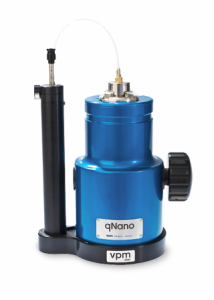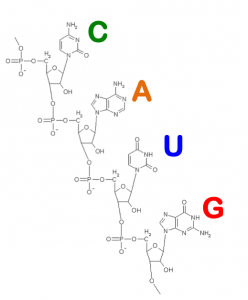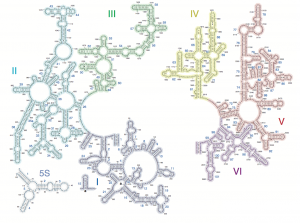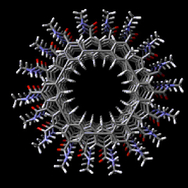The European Science Foundation (ESF) has just launched a report on science ‘in’ society as opposed to the more common phrasing science ‘and’ society. I’m not sure changing from science ‘and’ society to science ‘in’ society is going to be noticed all that much. (In marketing circles it was known as that the company’s correct name was The Gap but no one ever called it that and it was rarely written correctly by anyone other than company officials. Despite strenuous effort, it remained the Gap.)
From the July 16, 2012 news release on EurekAlert,
At the ESOF 2012 conference The European Science Foundation’s (ESF) dedicated Member Organisation Forum (MO Forum) on ‘Science in Society Relationships’ has released its latest report: “Science in Society: a Challenging Frontier for Science Policy”. The report has called for a strengthening of ‘Science in Society’ (SiS) activities in a time of ambiguity for science.
…
The latest report aims to highlight the role of science in society, to raise awareness of how scientific knowledge is translated into society and to encourage better practice in the relationship between science and society. In order to achieve a better society and increase the quality of research and innovation, the MO Forum offers several recommendations:
- A clear commitment to SiS in MO science policy and strategy has to be enhanced
- Transparent SiS processes must be put in place within the organisational structures of Member Organisations and other research funding and performing bodies. SiS processes must also be seen as an essential and central part of a researcher’s work
- Researchers and research groups must be properly rewarded for their work in this area
- More experiments concerning instruments, activities and methods should be encouraged
- Sharing experience and best practice through networks for exchange within Europe on a regular basis would increase efficiency in SiS
Networks to jointly develop systems for indicators, evaluations and measurements are needed. There is a need to coordinate efforts for greater impact. Organisations need the instruments to do this and this involves ensuring that SiS activities are formally evaluated, which is not the case today
You can download the report from here. Don’t worry about using the ‘shopping cart’, all I had to do was click on the ‘download’ button. I liked this graphic (from p. 11 of the PDF of “Science in Society: a Challenging Frontier for Science Policy”), which illustrates a changing approach to the topic,

Given that my primary interest is the communication of science (in whatever direction it occurs), I was most interested in these recommendations (on pp. 21-2 of the PDF),
4.2.1 Key recommendations for Research Funding Organisations (RFOs)
RFOs can be small or large, public or private, typically employing from 20 to 200 administrative staff. The main focus for organisations of this sort should be to ensure that there is sufficient funding for SiS activities. RFOs also have a responsibility to evaluate the quantity, quality and impact of SiS activities and to use this evaluation to reward researchers and research groups accordingly. Measures appropriate for RFOs are:
• Start by surveying the current situation. Is the present model working and does it fit with the mission statement with regard to SiS? Analyse if the funding situation with regard to SiS activities is optimal for the task. Is it within the research grant, or is there a separate fund for SiS, or a mixture of the two?
• Identify how to monitor what activities researchers funded by your MO currently participate in. Consider the audience being targeted, the impact, the quality, the cost (in terms of time and money). In what ways can you as a funding body influence this?
• Experiment, explore and learn ways to increase and enhance researchers’ participation in SiS relations. There should be inclusiveness across sciences and research groups; it should not be mandatory for every individual researcher but it is imperative that the dialogue is not confined to just a few selected researchers and research groups.
• Identify gaps in SiS activities, capacities and expertise where extra funding or support, initiated through the funding scheme, could improve things; for example through training and workshops.
4.2.2 Key recommendations for Research Performing Organisations (RPOs)
RPOs are often large organisations with tens, hundreds or thousands of researchers. This type of organisation, therefore, has the capacity to heavily influence the decisions and motivations of researchers when they consider involvement in SiS activities. Thus RPOs should ensure that there are sufficient resources allocated for SiS activities. RPOs also have the potential to include SiS as a consideration in promotions and pay rises. They will also have the power and the facilities to coordinate, organise or simply participate in training and workshops around SiS.
• Start by surveying current practices of society/ public interaction. Identify what activities go on now, the audience reached, the impact, the quality, the cost (in terms of time and money). Do they fit with the mission statement?
• Define and compare their qualities, publics, efficiency, etc. Select which seem to be more efficient and describe them in their context. Identify areas of strength and of weakness.
• Survey funding available to research groups for dissemination of research results (e.g. budgets provided for the EU-funded projects). Could the funds be used more efficiently provided that RPOs offer professional support to researchers both in performing SiS activities and in drafting new projects?
• Identify ways to increase and enhance scientists’ participation in SiS. There should be inclusiveness across sciences and research groups; it should not be mandatory for every individual researcher but it is imperative that the dialogue is not confined to just a few selected researchers and research groups.
• Identify gaps in funding, capacity and expertise and make plans to provide the necessary funding, training and support by professional staff for researchers and research groups.
• Integrate the scientific education of researchers with skills for science communication and dissemination.
• Raise awareness of stakeholders and decision makers, as well as of public groups of different kinds.
• Set up or participate in infrastructures for public engagement activities and communication arenas of all kinds: forums, dialogues, training, competences, etc.
I think the really important recommendation (if you want to see action from the researchers) is this one (from p. 27 of the PDF),
4.6 Make evaluation of SiS part of research funding schemes
By and large, there is need for change in the culture of scientific organisations. This is a clear conclusion from the work of the MO Forum on SiS relations. SiS activities should not represent an obstacle to researchers’ career progress. One effective way for RFOs and RPOs to show that they value SiS is to consider rewarding researchers for their SiS work, particularly by means of funding and merits.
The MO Forum recommends that RFOs and RPOs consider the following measures as a first step towards linking SiS activities with research funding.
(a) Introduce evaluation methods and indicators: [emphasis mine]
• Activities and time spent
• Resources – budget and human resources
• Income
• Develop impact measurements
• Indicators should be simple, transparent, easy to collect, generally accepted
(b) Make SiS an intrinsic part of funding and merits:
• Introduce SiS requirements at grant application stage – for instance, a plan of SiS activities at the grant application stage in order to prompt researchers to think about SiS issues
• In peer review decisions, use SiS as a differentiator when projects score equally on scientific excellence
• Collect data on SiS and enable researchers to report their SiS activities within current grant monitoring systems (annual, interim, end-of-grant, evaluation reports)
• When awarding grants, allocate a percentage of time to be spent on SiS activities
• Allocate funds for specific SiS-promoting activities
I believe this is where some previous programmes have fallen short. Including a section on funding applications about ‘public engagement’ or ‘science in society’ activities is all very well but it’s meaningless unless there is some overview and evaluation of the activities undertaken. As well, I think that at least one more element should be introduced and that’s substantive encouragement and recognition for the efforts from academic institutions in the form of career credit. The unwritten rule in academe (in Canada anyway) is still that you’re better off with research credits than teaching credits despite all the chat about the importance of students and their experience in the classroom.
One last note, I was quite intrigued by the definition of science used in the report (from p. 9 of the PDF),
Science may be considered as a broad field which includes a body of publicly proven knowledge that is separated into specific fields (disciplines). Research may be defined as the exploration of new fields or new questions, as exploratory activities by scientists in search of new approaches which contribute to our understanding of the world as well as to influence the world.
In this report, we took into consideration both aspects; so ‘science’ refers to science or research, and covers both abstract and practical activities, and encompasses all sciences, including humanities and social sciences as well as natural sciences, medicine and engineering.
It’s the first time I’ve seen the humanities included.



